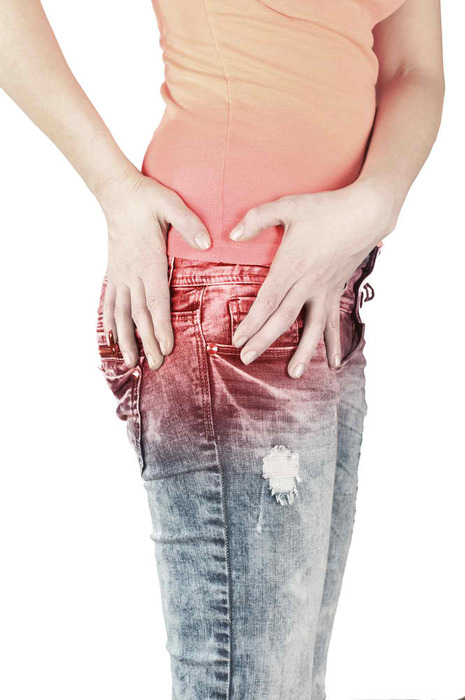News & Tips
Hip Pain and Bursitis – Sydney City CBD

A commonly seen condition at Macquarie Street Physiotherapy, Sydney is known as trochanteric bursitis (hip bursitis), or more specifically titled Greater Trochanteric Pain Syndrome (GTPS). This is a condition commonly seen in women, particularly post-menopausal women, whereupon pain is felt over the lateral (outer) part of the hip. Typically it is made worse with lying on that hip, using stairs, crossing legs, and sitting in low chairs. Exercise such as walking is made more difficult due to this pain.
Interestingly, GTPS is not a hip joint or back problem, and is sometimes misdiagnosed. It was thought originally to relate mostly to the bursa (fluid filled sac) which is found on the lateral bony prominence, the greater trochanter. We know now that tendons which insert into the greater trochanter (those of the gluteus medius and minimus muscles) along with this bursa, are often involved in this condition.
Causes of trochanteric pain
There are a number of possible causes of GTPS. They include posture, strength, skeletal structure and hormones.
Posture
Standing and sitting posture can put strain on the outer muscles of the hip. Gluteus medius and gluteus minimus have the primary function of stabilizing the hip on the pelvis. These muscles work to avoid a “catwalk” style of walking which puts strain on hip, pelvic and lower back joints. If we walk in this style, the muscles have to shorten and lengthen repetitively, which is not their usual stabilizing role. This can cause strain on these muscles, as does standing on one leg and hanging the other hip. Ideally we should “walk tall” without side-to-side sway, and stand with weight evenly on both legs.
Sitting on a chair with one knee crossed over the other also can put the gluteal muscles of the top leg under constant stretch, which can be a cause of strain and pain. Better sitting posture is to keep the legs uncrossed, or if necessary crossed at the ankles, which helps these muscles as well as the blood vessels which travel down the leg. So while you are sitting better for your hips, you are also reducing strain on your veins and therefore the incidence of varicose veins.
Strength
One of the best ways to avoid straining the gluteal muscles is to keep them strong. Avoiding the postures noted above, as well practising specific exercises can help reduce strain on these muscles and the trochanteric bursa. These exercises include squats, steps, lunges and any single leg balance exercise where good form is maintained. For those whose knees don’t tolerate squats, holding a squat position with one leg while moving the other (like dancing the “Nutbush”!) help to strengthen the standing leg.
Skeletal structure
There may be more difficulty in maintaining lateral hip stability in women than men, particularly in women with wide hips. This is due to a greater “Q-angle”, between pelvis and femur (thigh bone), in this population. This places the gluteal muscles at a relative disadvantage as they have to work around a greater angle.
Hormones
One cause currently under scrutiny is the positive impact of oestrogen on tendons, and the effect of its reduction during menopause. In post-menopausal tendons there is reduced collagen production, decreased tendon integrity, and an increased rupture rate. It may be that hormone replacement therapy can help reduce pain and dysfunction associated with tendinopathy. This would help explain why the majority of those suffering from this condition are post-menopausal women. This is an area of research currently under study.
What should I do next?
Contributing factors which are most easily addressed relate to back, hip and leg posture and strength. For this reason, your doctor may suggest you seek a physiotherapy opinion first. At Macquarie Street Physiotherapy, we look at your posture, core stability and hip and leg strength. Part of this assessment may include analysing your walking or running gait on the treadmill. It may look at your ability to squat, rise from sitting and other functional tests. Based on our assessment, we guide you through any hip-specific postural changes to be made and exercises/stretches to be done. Local treatment may include massage, ultrasound and stretching. It may be that a soft mattress overlay also reduces the pain at night. At every stage the aim is to reduce the pain you experience.
Anything else?
If physiotherapy alone is not enough to completely resolve your symptoms, we would liaise with your doctor about anti-inflammatory medication, cortisone injection, imaging or referral to a sports physician or orthopaedic specialist. If you live or work in Sydney we look forward to giving your hips a helping hand!








